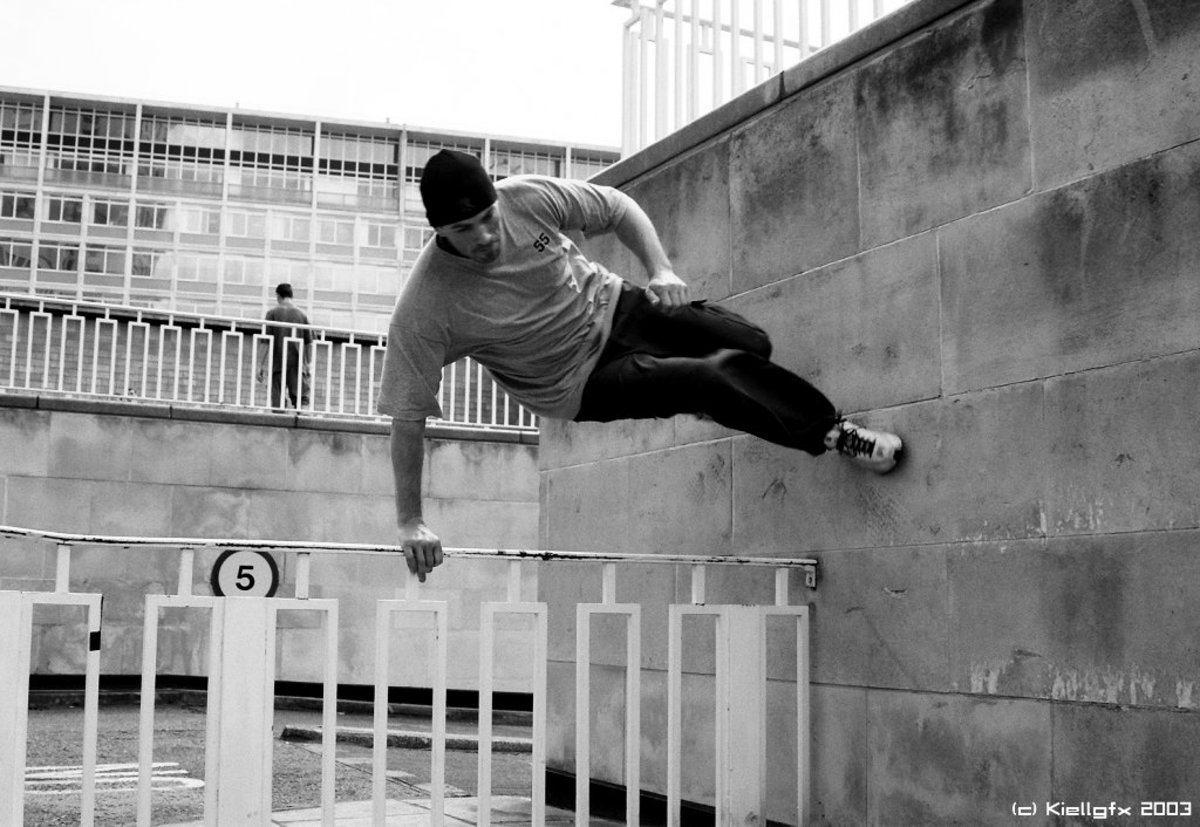Bulging Disc In Neck - Non-Surgical Treatment - What Are Your Options?
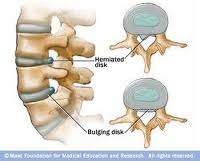
5 Different Levels of Bulging Disc Treatment
Are you suffering from a bulging disc in your spine?
Bulging disc is a fairly serious and very uncomfortable medical condition. About 60-80% of all people in America alone will suffer from chronic back pain at some point in their lives, and most of these cases will be caused by a bulging disc in the spine.
When it comes to bulging disc, treatment is very often individualized. After all, no two people are exactly alike. That's why treatment regimens vary, depending on the individual's body type, lifestyle, work habits, and so on.
But no matter what the individual's unique situation might be, it can be said that every bulging disc sufferer would like to avoid surgery if they can help it. Surgery is expensive, and the months of recovery can be long and uncomfortable.
That's why most health professionals (and good common sense) would dictate that cheaper, more conservative treatments should be exhausted first before surgery is even considered. This Squidoo lens will go through the different kinds of treatment available for bulging disc - from the most conservative to the most drastic.

First Level - Lifestyle Changes
It All Starts In The Home
The first and most convenient non-surgical treatment for bulging disc involves some changes in your lifestyle. It's very likely that your bulging disc problem started at home or work - perhaps you lifted something heavier than you can manage, or you sit on your couch much too long every day.
More about bulging disc treatment
In most mild cases of bulging disc, simple lifestyle changes can be effective. Often, the pain isn't too bad, and your back may only hurt when you lean over at certain angles. Lifestyle changes, such as not lifting heavy objects anymore, or observing proper posture when sitting or lifting, can help the bulging disc heal by itself.
Perhaps the biggest challenge of making lifestyle changes is breaking old habits. Habits are deeply-ingrained, and can take weeks or months to totally replace.
What's more, these changes can be emotional and depressing for some people. For instance, athletes and outdoorsy individuals may lament the idea that they won't be able to enjoy their sports and hobbies as much anymore.
In cases where lifestyle changes are out of the question, as well as in cases when lifestyle changes fail to relieve the pain caused by bulging disc, the individual can proceed to the next treatment option in the ladder: Medication.

What have You Tried To Reduce The Pain?

Second Level - What Does The Doctor Order?
Prescription Medication For Bulging Disc Pain
Medication for bulging disc comes in two forms - oral, and injection. Both types of medication are meant to relieve pain only for short periods of time - such as days or weeks. As such, you may need to take medication constantly to get lasting pain relief.
Common oral medication for bulging disc pain includes muscle relaxants, which relax tense muscles around the bulging disc and relieve some of the pain. Epidural injections, on the other hand, are made directly onto the offending disc. This can relieve pain for up to weeks at a time.
However, it's not likely that medications alone will totally get rid of the pain. That's why physicians rarely prescribe medications on their own to combat bulging disc pain. There's always a second ingredient to the regimen: Physical therapy.

Third Level - Get Up And Get Moving!
How Physical Therapy Offers Long-Term Relief From Bulging Disc Pain
Physical therapy is a treatment method that's meant to rehabilitate the body. It encourages the practice of proper movement and body posture, which in turn helps prevent the worsening of pain caused by a bulging disc.
Physical therapy normally consists of various stretching and movement exercises that encourage the realignment of the spine. The exercises also strengthen the muscles in the back and core, which helps hold up the spine better and relieves pressure on the spine. For milder cases of bulging disc, the combination of medication and physical therapy works quite well. It's even possible that just a few weeks of the regimen can result in relief that lasts for years. For more serious cases, however, a third ingredient is added to the regimen: Traction therapy.
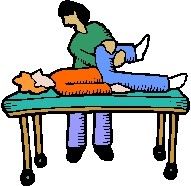
Fourth Level - The Benefits Of Traction Therapy
How Traction Therapy Kick-Starts The Healing Process Of A Bulging Disc
Traction therapy is meant to realign the spine, as well as stretch the bones apart and relieve pressure on the bulging disc. The pain caused by a bulging disc is mostly due to the pressure the bones put on the disc. But when the pressure is relieved, the disc is given a chance to heal itself.
Traction therapy is traditionally done with a traction machine. The patient lies on their back or stomach, with their waist strapped to one end of the machine, and their arms strapped to the other end.
Traction works by slowly and gently stretching the spine and releasing. Since the patient is lying down and relaxing on a padded surface, the bones in the spine are stretched apart while the back muscles remain relaxed. This prevents painful back spasms. The entire process is generally very relaxing to the patient, who might even fall asleep in the middle of the session.
A traction therapy session often lasts about 30 minutes, divided into two 15-minute sessions. Traction therapy is the last and perhaps most effective way to treat bulging disc pain. But if even the combination of medication, physical therapy, and traction therapy fail to bring significant pain relief, then there's no other option but to undergo surgery.

Fifth Level - Going Under The Knife
The Pros And Cons Of Bulging Disc Surgery
Bulging disc surgery involves making an incision over the bulging disc and surgically repairing the damage. The surgery can be minor, requiring a small incision, or major, requiring the removal and replacement of an entire vertebra.
Surgery may sound scary, but it's actually quite successful. About 90% of bulging disc sufferers who undergo surgery report significant, lasting pain relief after the operation. Of course, that means that 1 out of 10 bulging disc sufferers experience no subsequent relief, and in rare cases, the pain may even worsen.
Surgeries, when they go well, often last only around an hour. You might need to stay in the hospital for one night, but the recovery period at home can take anywhere from a few weeks to several months, depending on the extent of the surgery.
Again, surgery is a good last resort, only to be considered after all the more conservative treatments fail.
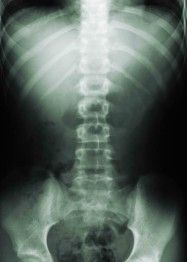
Bulging Disc First Aid
What To Do When You Suspect You Have A Bulging Disc
First of all, when you feel any pain or discomfort, discontinue any lifting or exercise you're doing. If the pain is intense, get help immediately. You should never dismiss the pain as something that "might go away in the morning."
It's very important to seek treatment as soon as you feel any back pain or discomfort that lasts longer than a few days. At the slightest suspicion of bulging disc, see your physician and/or request to have X-rays or an MRI done. Bulging discs get worse when left undiagnosed and untreated.
There have been cases, for instance, when a bulging disc problem was undiagnosed for several years before treatment was started. In such cases, the pain had grown so bad that even surgery could not fully get rid of the pain.
Don't let that happen to you! Consider the conservative non-surgical treatment methods enumerated in this Squidoo lens, as well as alternative treatment methods you might like to try.
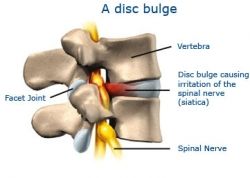
Have Bulging Disc In Neck?
What Are Causes, Symptoms, and Treatment?
A bulging disc in the neck is one of the leading causes of neck pain, especially among older individuals.
The problem with a bulging disc in the neck is that the pain and discomfort can radiate to other areas of the body, such as the arms and legs, reducing mobility and driving the quality of life down.
Are there no-surgical treatments for bulging disc in neck available? Yes, there is!
If you have neck pain due to bulging disc, You may also want to explore home neck traction devices. These neck traction devices simulate the soothing, healing effect of traction machines on the neck and back - all in the comforts of your home.
These neck traction devices are small, portable, easy to use, and safe.
Home neck traction devices give your bulging disc a chance to heal itself every single day, and it's growing in popularity among neck pain and back pain sufferers. And if it means avoiding going under the knife, then it's definitely worth a try.

How Neck Traction Can Help Relieve Pain From Bulging Disc
One of the safest and most effective ways of treating a bulging disc in the neck is through Neck Traction. This method involves stretching the bones of the neck and spine to relieve pressure on the bulging disc, without using any drugs.
This is an interesting article about neck traction device and how it can make the pain go away for good.
But as with all medical cases, prevention is always the key. As early as you can, practice the proper posture to avoid putting unnecessary load on your neck and spine. It's also a good idea to get lots of exercise, especially to strengthen the muscles in the neck and back. That way your core is well-supported, and your spine doesn't have to carry so much weight.
Watch How To Use Neck Traction Device
Causes Of Bulging Disc In Neck
Discs are soft, sticky pieces of cartilage between the vertebrae. These discs act as cushions and shock absorbers in the spine, keeping it flexible and strong. The biggest cause of bulging discs is injury or trauma -- accidents or sudden jolts to the neck can cause the discs to get compressed suddenly or slip out of place.
Another cause of bulging disc is a sedentary lifestyle. Decades of poor posture and lack of exercise can put a lot of unnecessary weight on the discs, which start to bulge and pinch nerves as they grow weaker with age. As more nerves get compressed, pain results -- often shooting up and down the rest of the body.
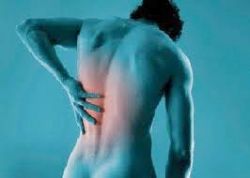
Symptoms To Watch Out For
- More Than Neck Pain
The pain can vary in frequency and intensity. It can be dull, or it can be sharp and intense. It may become difficult to move the neck without feeling pain shooting through your body. That means doing simple everyday tasks can become difficult.
Also, pay attention to any pain in your limbs. In some cases, bulging discs in the neck can cause more intense pain in the limbs than in the neck. This depends on which nerves are being pinched by the weakened disc.
And finally, take note when you suddenly feel any weakness in your limbs. For instance, when you lose your balance while walking on a flat, straight surface, or when you suddenly drop something you're holding in your hand, it might be a sign of a bulging disc in your neck.
Bulging Disc Treatments For Neck
Besides Using Neck Traction
Since most bulging disc cases are mild, most treatment is centered around pain management. Sufferers may take drugs such as painkillers and muscle relaxants to relieve the pain and function better. Physical therapy also helps reduce future pain, and hot compresses can help the muscles in the neck relax.
More severe cases of bulging disc in neck may require medical intervention. Surgery may be required to replace or repair the disc, or add some special support to the bones in the neck. An MRI scan will tell doctors what the problem exactly is and what the safest invasive procedure will be.

Should You Consider Alternative Treatments?
Other Emerging Treatment Methods That You Might Find Useful
Alternative methods of exercise such as Tai Chi and Yoga are great ways to get the exercise you need without exerting too much stress on the spine.
Such exercises are also good for preventing bulging discs in the first place, since they strengthen the core muscles and keep the spine straight.

When To See Your Doctor
Whenever you feel some unusual pain, tingling, weakness or numbness in your neck and limbs, see a doctor right away. Don't wait for the pain to get worse -- the earlier you address the problem, the smaller your chances of requiring painful, expensive surgery in the future.
Want to know more about bulging disc treatment? Read this article
Your neck pain should not end up in surgery.



